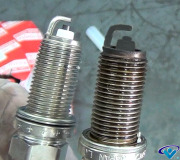I just bought a 92 VW Cabriolet 5spd manual it has 106k miles on it.
The problem is when I push the gas pedal fast ant totally in it sound like it wants to stall for a sec. And than the rpm raises normally, but when I release the gas pedal the idle falls back too low (about 300 rpm) the car almost stalls, and after a moment it's back to 800rpm.
After about 25 minutes it's running ever worse. It smokes black. It's running rich and doesn't even want to go. So this is 2 separate problems or maybe related to each other.
Compression is perfect. It has new distributor cap, rotor, cables, plugs, new water temperature sensors, new air filter. Vacuum lines checked.
The car doesn't have any check engine light!Is there a way to diagnose the the car?If there is what tool do I need to buy?I want to keep the car for a long time.
Could it be oxigen sensor or injectors?
If anyone could help that would be really great!
Thank You in advance!
Peter
SPONSORED LINKS
Monday, October 8th, 2007 AT 9:44 PM





